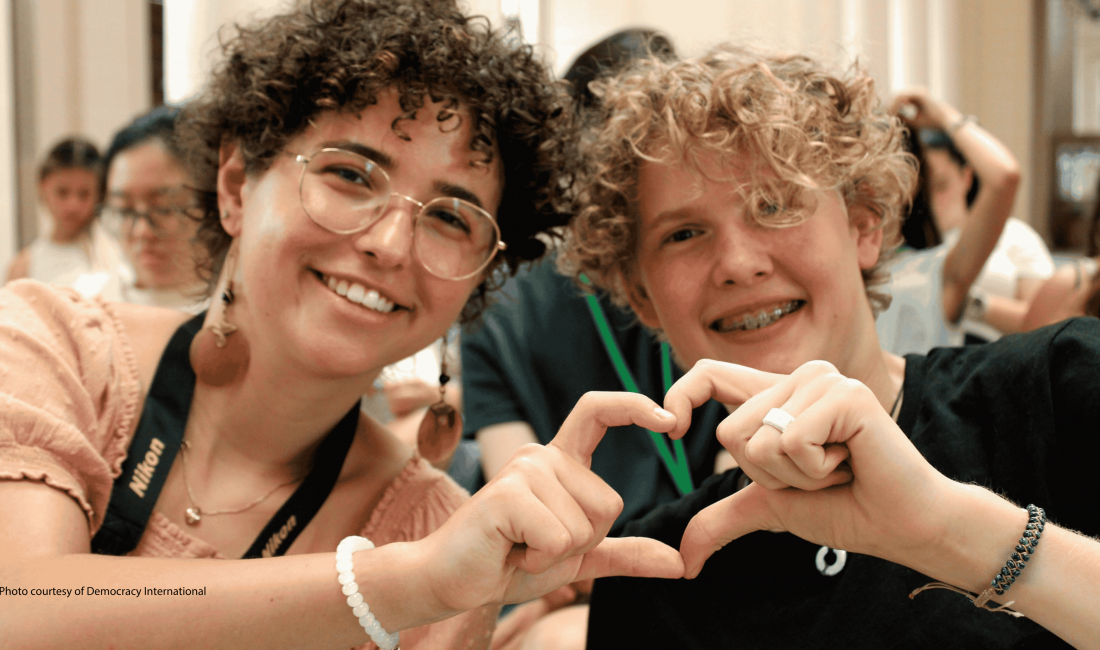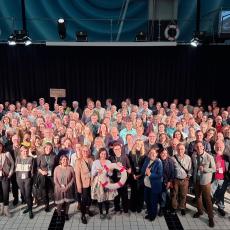On this International Youth Day, how can we move beyond symbolic gestures and hashtags to ensure that youth participation is truly integrated into our democratic institutions?
This question resonates in the hearts of young people, like me, who have a vision of a world we want to live in. The societies we want to grow up in. And the world we want to build for future generations. Yet, in our hearts also remains the frustration of the limits of our actions. While youth activism is rising and prominent, real power and representation are still trailing.
While youth activism is rising and prominent, frustration remains in our hearts.
There is a limit on our actions, as the real power to impact and the real representation are still trailing.
The Rise of Youth Activism vs. Institutional Exclusion
Here is something to think about: Young people in Europe and around the world demonstrate unprecedented engagement, mainly through informal channels. The pioneering campaigns, community projects and cross-border activism on equality by youth exist like never before. The vibrancy of youth activism showcases that we care deeply about democracy and social issues!
But here is a democratic paradox: despite being at the forefront of many contemporary social movements, youth do so mainly through informal channels. When it comes to institutional politics, young people often disengage. Formal decision-making processes do not reflect their aspirations, values and ideas. The exclusion runs deeply in systemic discrimination of marginalised young people who face social stigma, lack of access to resources and structural exclusions (Lavizaari, n.d.).
This lack of representation means young people's realities and perspectives are absent.
Youth underrepresentation in elected bodies is striking. Half of the world’s population is under the age of 30, yet a report from 2023 shows that only 2.8% of parliamentarians are under 30 (Inter-Parliamentary Union, 2023). The situation worsens by the fact that in Europe, around 7 million young people with political opinions, between 16 and 17 years old, are denied the right to vote. (European Youth Forum, n.d.). If young people’s voices are not heard and represented in such institutional bodies, how can they reflect their perspectives and priorities?
So, What Would Make Young People Feel Involved in Institutional Politics?
The Youth Democracy Handbook, authored by youth from across Europe and a direct result of our Democracy Camp, provides some insight.
While many tools for participation exist, “democracy is never finished”.
There is always room to strengthen youth empowerment by expanding their formal power and the impact of their voices in decision-making processes.
Here are some things young people propose:
- Lowering the voting age and the age for signing direct democracy initiatives, allowing youth to influence outcomes based on their perspectives and world views.
- Fostering access to work experience to equip youth with the knowledge and practical tools needed to participate and navigate formal political systems.
- Promote a stronger dissemination of best practices such as the European Citizens’ Initiative, Youth Councils, the EU Youth Dialogue, European Economic and Social Committee (EESC), Citizens, Equality, Rights and Values (CERV), or the European Solidarity Corps– These already existing best practices can be used by young people to meaningfully participate in democracy.
- Expanding access to educational projects, such as Model United Nations or Model European Union, to teach youth the mechanisms of such institutional bodies.
- Including “life skills” workshops, such as public speaking and media literacy, in school curricula to ensure all youth have the foundational skills needed to effectively take part in democracy.
- Embracing digital tools for democratic processes, such as digital voting, elections or referendums, to make them more accessible and appealing to youth, allowing them to engage in formal politics through channels they are familiar with and comfortable with.
- Fostering meaningful engagement between young people and decision-making to ensure that their perspectives are actively included in political institutions.
- Legislative changes, for example, the inclusion of binding elements in decisions taken by youth councils, to empower young people and expand their opportunities and access to participate in democratic processes.
These are a few ideas that young people proposed in the Youth Democracy Handbook. Fostering meaningful youth participation means creating pathways for them to move from advisory roles into actual decision-making positions. It means following up when young people voice their concerns and ideas, presenting how their inputs lead to concrete results in policies and the political scenario.
When to show that their ideas are not only symbolic but also impact the laws and policies that directly affect them.
Effective participation of young people can be achieved through the adoption of co-management structures, where youth and officials what the decision-making power at several steps of policy processes. Effective participation of young people means that their influence is tangible and visible at the end of decision-making processes.
A Bonus Idea– Looking Beyond the Future
To empower youth in democracy, we must not only look at the future but also connect with the past. Europe’s democratic values and processes today are built upon the struggle against fascism and totalitarianism. Engaging young people in democratic remembrance ensures that the lessons of such times are not forgotten and that the same mistakes are not repeated. Yet, spaces for youth to explore these topics are shrinking, risking indifference to human rights and the rise of hate speech. If young people do not know what came before them, they may take democracy for granted. Remember yesterday’s struggles can empower today’s young Europeans to protect and enrich their democracies.
We explore these topics in Youth Bridges Europe, a youth event dedicated to democratic remembrance.
Towards a Youth-Driven Democratic Future
As shown by the lack of institutional representation, as opposed to the enthusiasm of young people on shaping the world they live in, what is missing for meaningful youth participation in democracy is power, not passion.
“Democracy is never finished,” the Handbook reminds us.
Institutional change and a shift in political culture are needed to embed youth voices at the core of governance and decision-making processes, beyond symbolic representation.
When young Europeans see that their votes, ideas, and actions shape policy, they gain ownership and trust. In turn, societies benefit from the creativity and urgency that youth bring.



